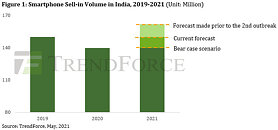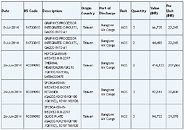India PC Market Ships 4.5 Million Units in 3Q21, Reports All-Time High Shipments, According to IDC
The India traditional PC market (inclusive of desktops, notebooks, and workstations) continued its growth momentum despite ongoing supply and logistical challenges. The traditional PC shipments witnessed a 30% year-over-year (YoY) growth in 3Q21 (Jul-Sep), marking the fifth consecutive quarter of growth in India, according to new data from the International Data Corporation 's (IDC) Worldwide Quarterly Personal Computing Device Tracker. A total of 4.5 million PCs were shipped during the quarter, making it India's biggest-ever single quarter. To put this in perspective, it is bigger than the total yearly consumer shipments in 2019, a year before the pandemic hit us. As a result, many brands also reported their biggest quarter of PC shipments.
Notebook PCs continue to dominate the overall category with more than 80% share. Enterprise and consumer demand helped the Notebook category to reach over 3 million units for the first time, and the desktop category also continued its upward momentum as it grew by 30.5% YoY in 3Q21.
Notebook PCs continue to dominate the overall category with more than 80% share. Enterprise and consumer demand helped the Notebook category to reach over 3 million units for the first time, and the desktop category also continued its upward momentum as it grew by 30.5% YoY in 3Q21.


































